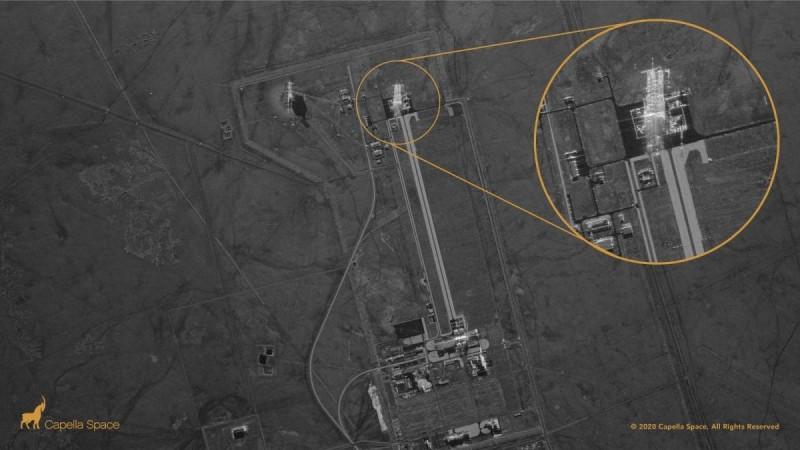Major powers such as the United States, Russia and China excel in spying with their surveillance satellites capable of capturing images on the ground, so accurate that they can monitor any military movements or activities. But none of them could penetrate the clouds and night time darkness to capture images on grounds, or take snaps of buildings on the ground in detail.
Capella Space's satellite
However, a new satellite launched by a company called Capella Space is capable of taking clear radar images anywhere in the world, with incredible resolution, penetrating clouds. The satellite named Capella 2 can take crystal clear pictures during night or day, rain or shine.

"It turns out that half of the world is in the nighttime, and half of the world, on average, is cloudy. When you combine those two together, about 75 percent of Earth, at any given time, is going to be cloudy, night time, or it's going to be both. It's invisible to you, and that portion is moving around," Payam Banazadeh, a former system engineer at the NASA Jet Propulsion Laboratory, and the CEO of Capella Space told Futurism.
How Capella can capture crystal clear images in dark?
Instead of optical imaging to capture pictures on earth like other satellites, Capella uses synthetic aperture radar or SAR, and it helps to peer right through the cloud cover, even in total darkness.
The synthetic aperture radar works very similar to echolocation, a technique used by dolphins and bats to navigate. The Capella satellite beams down powerful radio signals towards its target and this signal later bounces back to orbit.
As the satellite is capturing its own signal rather than capturing light, these signals give the strength of a detailed image. On Wednesday, Space Capella also revealed that they are launching six similar satellites next year.

In an exclusive note to IB Times India, Capella said that these satellites could help scientists and governmental agencies to monitor the planet with more precision.
What SAR Can do?
Synthetic aperture radar (SAR) uses radio waves to form SAR images. These waves do propagate through walls in the same way that cellular phone and Wi-fi signals travel through walls but cellular signal will be weaker the further away from the Wi-fi access point or cellular tower. Radar signals are no different.
"So, while the radar signal does go through walls like Wi-Fi does, the signal is far too weak to image or see indoor objects. You cannot see indoors with SAR despite the signals," explains the note by Capella. "At over 370 miles away, Capella's satellite can image and see outdoor large objects such as aircraft, ships, outlines of buildings etc. However, it cannot image nor see anything going on inside a building."
What SAR cannot do
SAR cannot see through buildings, clarified the company in a detailed note. "The ghost-like images of buildings you see in SAR are distortions related to how radar images, not a view through the building. In areas with tall objects such as skyscrapers and mountain ranges you get an image distortion that shows the tall objects overlaid on objects surrounding the mountain or building, making it appear as if the object is leaning towards the radar."
It means, "we are not seeing through the ghost-like buildings, but rather you're seeing the walls of the building that are on the same side of the building as the radar overlaid on the roads adjacent to the buildings."
As per the imaging resolution limit set by the US government for commercial satellites (50 cm for SAR technology), Capella said it adheres to these standards and build capabilities that detect large-scale change such as deforestation, the growth of cities, the number of mining trucks in an open pit or the ships at a container port.
"If you have seen our imagery you will know that we are not able to and are not connected to the privacy concerns related to cell phone geolocation. It also goes strictly against our privacy and ethics guidelines to violate the privacy of individuals."
Not everyone can buy Capella's imagery. "Our products are designed specifically for customers that have been diligently researched and in compliance with the US Government's ITAR standards and our licensing requirements," said the company.

















